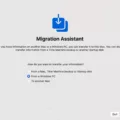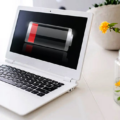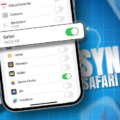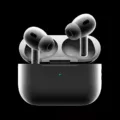Are you considering purchasing a MacBook Air? If so, you’re in for a treat – the MacBook Air offers unbeatable performance, portability, and battery life. But what is the charging cost to charge a MacBook Air?
The cost of charging your MacBook Air depends on several factors, including the device’s wattage rating, the power adapter wattage output and efficiency, and your local electricity rate. Generally speaking, charging a MacBook Air can range from as little as $0.50 per charge up to around $1.00 or more depending on the above factors.
For example, at 10 cents per kilowatt-hour multiplied by 50 watt-hours, it will cost $0.50 to charge your MacBook. However, the energy efficiency must be calculated for as well – at 80% efficiency, you will pay an extra 20% for lost energy.
It’s impossible to give a simple answer, as electricity prices vary by region and fluctuate frequently. However, it would rarely exceed $1-2 in this day and age.
Charging a MacBook Air: How Much Time Does It Take?
You can fast charge your device and reach 50% in just 30 minutes by using the correct cable and power adapter if you have a MacBook Air 2022 or later or a 14 or 16-inch MacBook Pro model from 2021 or later. Fast charging will last until around 70-80% battery power is achieved, after which it will start charging more slowly, so the full charging time can take up to two hours or so.
Other MacBook models may take longer. The same applies if you are using third-party adapters and cables that do not offer fast charge technology.
Does a Mac Use a Lot of Electricity?
No, a Mac doesn’t have a high electricity usage. Your MacBook’s energy efficiency depends on factors such as the model and battery, so it’s impossible to give an exact number. However, it’s not very high. In addition, power consumption can be reduced by changing the settings on your Mac so that it goes into sleep mode quickly.
The Impact of Charging a Laptop on Electricity Usage
Charging a laptop does not use a lot of electricity compared to other household appliances. On average, a laptop uses about 25–70 watts of electricity per hour. This is just a fraction of the energy used by other devices like refrigerators and washing machines, which typically use several hundred watts or more. To put this into perspective, incandescent light bulbs use about 60 watts of electricity per hour. Laptop charging is very cost-effective overall. You can reduce electricity usage and energy efficiency by setting your laptop to go into sleep mode after a few minutes.
Alternative Ways to Charge a MacBook Air
There are several alternative charging methods which you can use to charge a MacBook Air. For example, you can use a power bank or external battery pack to charge your MacBook. That way, you can avoid using electricity. However, you will still need to recharge your power bank at some point, which will still require electricity.
Leaving a Laptop Plugged in 24/7: Is It Safe?
It is generally safe to leave your laptop plugged in 24/7. Most modern laptops are designed with built-in circuitry that will prevent the battery from overcharging and the laptop itself from drawing too much current.
However, it’s important to take into account other factors such as heat build-up and power surges, which have the potential to damage your laptop. If you are going to be leaving your laptop plugged in all the time, it’s best to make sure it has adequate ventilation for safety reasons. Remember that continuous charging can cause the battery to get worn out quicker, which is why the best charging practice is to unplug it once the battery is full.
Does Unplugging a Laptop Save Electricity?
Unplugging your laptop can lead to electricity savings, as it prevents the laptop from drawing power from the wall when not in use. This can be especially beneficial to those who often forget to turn off their laptops before disconnecting them.
When unplugged, most laptops will switch to battery mode, which requires less energy than when they’re plugged in and running at full speed. Additionally, charging a laptop will draw power even when it is turned off, so unplugging it after a full charge can also reduce your electricity usage.
A good energy efficiency tip is to unplug your laptop once it reaches a full charge. Then, as the power dips to below 20%, you can plug it in again and continue using it until it fully charges again.
Conclusion
The MacBook Air is an excellent device. With fast charging, it can charge up to 80% in an hour or less! For cost-effectiveness and energy efficiency, avoid keeping it plugged in when fully charged. By sticking to mindful charging practices, you can reduce energy consumption and also help preserve your battery life.








